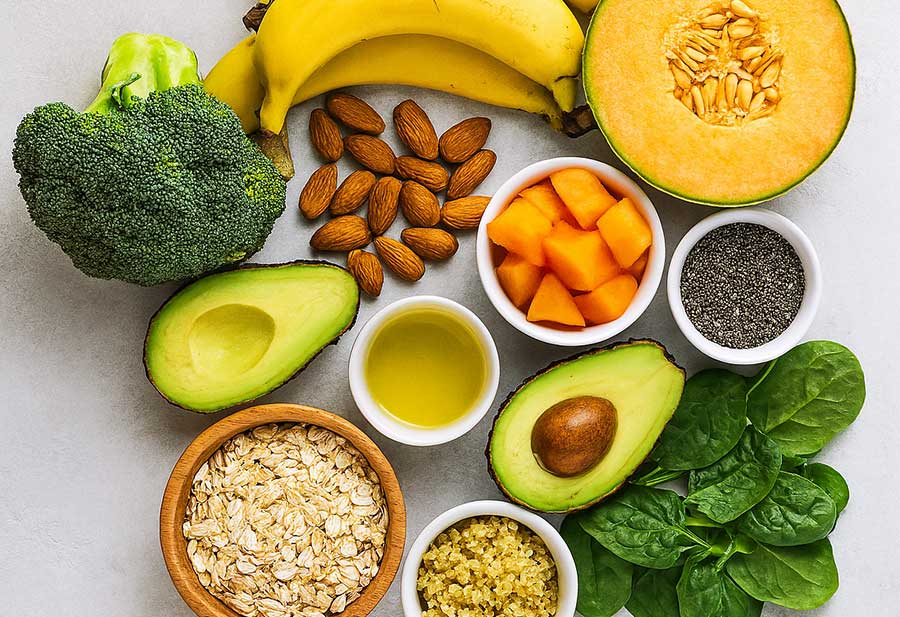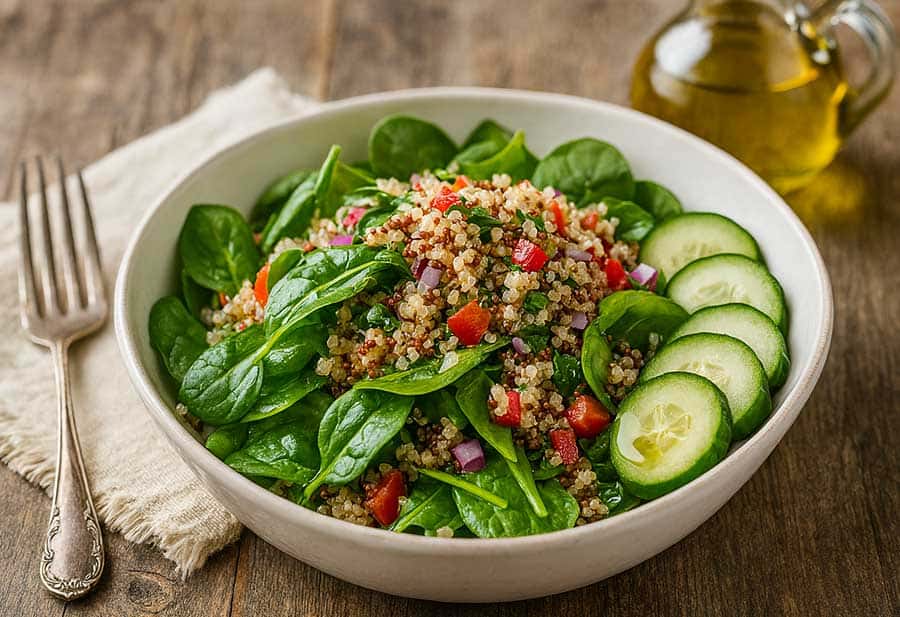Acid reflux is a common concern affecting many people today.
Surprisingly, about 20% of Americans experience gastroesophageal reflux disease (GERD).

That number shows not just how widespread it is, but also how much demand there is for effective management options like the Dropping Acid Cookbook.
This unique acid reflux diet book offers solutions tailored for those dealing with GERD and laryngopharyngeal reflux (LPR), emphasizing the benefits of low-acid food.
Understanding Acid Reflux and LPR
Acid reflux happens when stomach acid flows back into the esophagus, causing the familiar symptoms of heartburn and discomfort.
Laryngopharyngeal reflux (LPR), often called “silent reflux,” can occur without the classic symptoms of heartburn, making it trickier to diagnose.
Instead, LPR may lead to hoarseness, a sore throat, or a chronic cough.
I’ve found that understanding the impact of specific foods is crucial, because they can either trigger or ease symptoms.
Acid Reflux Symptoms:
- Heartburn
- Regurgitation
- Difficulty swallowing
LPR Symptoms:
- Hoarseness
- Sore throat
- Chronic cough
The diet in the Dropping Acid Cookbook focuses on minimizing foods that trigger these symptoms while promoting ingredients that support better digestion.
This approach can make life more comfortable and enjoyable!
How the Dropping Acid Cookbook Can Help
The Dropping Acid Cookbook offers a fresh approach to managing acid reflux and LPR through delicious, easy-to-follow recipes.
It’s designed to help you enjoy meals without worrying about triggering uncomfortable symptoms.
Origins and Unique Approach
Developed by Experts:
Crafted by specialists in nutrition and digestive health, specifically for GERD and LPR.
Dietary Principles:
Emphasizes low-acid foods, reducing symptoms by minimizing acid-producing foods.
Recipe Variety:
Offers a wide range of meal options so you can enjoy diverse dishes without compromising your health.
If you’re interested in low-acid meal planning, you can explore resources like the book Dropping Acid,
The Acid Watcher Diet by Jonathan Aviv, or Cooking to Reduce the Burn by L.M. Charbonneau.
Each offers a distinct approach to reflux-friendly cuisine.
Essential Ingredients for an Acid-Friendly Kitchen
Creating an acid-friendly kitchen starts with stocking ingredients that are gentle on digestion.
The Dropping Acid Cookbook highlights foods that help manage acid-related issues.
Key Ingredients
Alkaline Foods:
Bananas, melons, and greens help neutralize stomach acid.
Low-Acid Vegetables:
Broccoli, cauliflower, and cucumbers are gentle and rarely trigger reflux.
Healthy Fats:
Avocado and olive oil provide nutrients while being easy on digestion.
Health Benefits
Digestive Support:
These foods promote better digestion and reduce reflux symptoms.
Nutritional Value:
They offer essential vitamins and minerals, supporting overall health.
I recommend organizing your pantry with these staples.
It makes sticking to an acid-friendly meals easier and helps you feel better day to day.
Sample Recipes to Get Started
The Dropping Acid Cookbook is full of recipes designed to support digestive health.
Here are two simple ones I think you’ll enjoy.
Banana Oatmeal Smoothie

This smoothie is gentle on the stomach and a perfect way to start your morning.
Bananas are naturally low in acid and ease digestion, while oats provide fiber for a healthy gut.
Ingredients:
- 1 ripe banana
- 1/2 cup cooked oats
- 1 cup almond milk
- 1 tablespoon honey (optional)
- A pinch of cinnamon
Preparation Tips:
- Blend all ingredients until smooth.
- Use ripe bananas for a creamier texture.
- Add ice cubes for a thicker consistency.
Digestive Benefits:
- Bananas soothe and help neutralize stomach acidity.
- Oats add fiber, aiding digestion and gut health.
Quinoa and Spinach Salad

This salad is nutrient-packed and low in acid, making it a great lunch or dinner option.
Ingredients:
- 1 cup cooked quinoa
- 2 cups fresh spinach
- 1/2 cup cherry tomatoes, halved
- 1/4 cup cucumber, diced
- 2 tablespoons olive oil
- 1 tablespoon lemon juice
Preparation Tips:
- Mix quinoa, spinach, tomatoes, and cucumber in a bowl.
- Drizzle olive oil and lemon juice, then toss gently.
- Add herbs or a pinch of salt for extra flavor.
Digestive Benefits:
- Quinoa is high in protein and easy to digest.
- Spinach and cucumbers hydrate and provide fiber for healthy digestion.
Adapting Your Meals for Better Digestion
Transitioning to more acid-friendly food isn’t just about new recipes.
It’s about transforming everyday meals using the principles from the Dropping Acid Cookbook.
Here are some ways I suggest you adapt your meals:
Practical Meal Planning Tips:
Choose Alkaline Foods:
Add leafy greens and root vegetables to balance stomach acid.
Opt for Lean Proteins:
Chicken, turkey, and fish are easier to digest and nutrient-rich.
Cook with Olive Oil:
Swap butter or cream sauces for olive oil. It’s gentler and provides healthy fats.
Simple Substitutions:
Use Low-Acid Fruits:
Replace oranges or tomatoes with pears or melons.
Whole Foods Over Processed:
Choose brown rice over white bread or pasta for added fiber.
Herbs Instead of Spices:
Use ginger, basil, or parsley to soothe discomfort instead of spicy seasonings.
By thoughtfully choosing ingredients and preparing meals the cookbook suggests, you can move toward better digestive health.
Promoting Long-term Digestive Health
Managing acid reflux and LPR requires consistent lifestyle changes.
By embracing the principles from the Dropping Acid Cookbook, you can support your digestive health long term.
Here are some suggestions I’ve found helpful:
Gradually Integrate New Recipes:
Add one or two new recipes each week to build habits.
Balance Your Meals:
Eat plenty of fruits, vegetables, lean proteins, and whole grains.
Stay Hydrated: Drink water throughout the day to aid digestion and reduce reflux.
Regular Meal Times:
Eating at consistent intervals helps digestion and lowers reflux risk.
Start Your Journey Toward Better Digestion Today
Now that we’ve explored the benefits of the Dropping Acid Cookbook, it’s time for you to take action.
Here’s how you can get started:
Purchase the Cookbook:
Investing in it gives you access to recipes designed to minimize reflux symptoms.
Begin with Simple Changes:
Try one or two acid-friendly recipes each week.
Monitor Your Progress:
Track your symptoms and adjust your food intake based on what works best for you.
Consult Professionals:
Speak with healthcare providers or dietitians if you’re unsure about changes or need
- The 12 Best Kombu Substitutes for Your Favorite Recipes - December 8, 2025
- Kitchen Efficiency: How Reducing Fry-Oil Costs Improves Operations - December 8, 2025
- A Grill for Everybody This Black Friday - November 24, 2025

